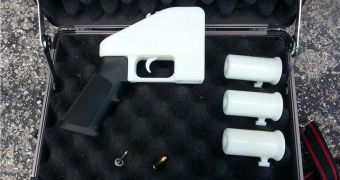So far, all the “official” 3D printed gun projects have involved metal pins and triggers, to ensure they'd be picked up by metal detectors in airports, but it doesn't take a genius to know that lots of undetectable guns can be made anyway, since those components aren't really necessary.
It's an issue that has sparked much debate over whether or not it should be illegal to manufacture weaponry via 3D printing.
Great Britain is now giving its two cents, so to speak. It's kind of surprising it took this long, seeing as how the US congress has already banned the things, unless you get a special permit anyway.
Britain's stance is quite similar: unlicensed 3D printing of guns is illegal and punishable with time in prison. The maximum sentence is of 10 years.
It's really ironic, in a way, that plastic guns are actually as deadly as regular ones, albeit less likely to survive for a long time.
Anyway, weapons made by printing their components are already banned in Britain under the 1968 Firearms Act, but the Home Office decided it was safer to update the rules to prohibit the manufacture, sale, purchase and possession of them unless licensed.
"There has been an enormous amount of interest in recent months in 3D-printed guns and the potential dangers they pose," Crime Prevention Minister Norman Baker said in a statement.
"There is no evidence that they are in widespread circulation, but the coalition government has reviewed existing firearms legislation and made it absolutely clear that it is an offence to own or manufacture a 3D printed gun without a license."
We can understand the feeling, after seeing the 3D blueprint of Liberator, the first 3D printed gun ever (invented by 25-year-old law student Cody Wilson) downloaded 100,000 times in just 2 days, prompting the US Department of Defense to ban it.

 14 DAY TRIAL //
14 DAY TRIAL //